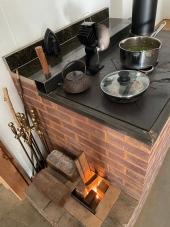


Nancy Reading wrote:This was an interesting topic for me since I have only ever had hot water tanks in my houses, albeit not large super insulated ones as Matt suggests. I suspect that this is something that people who take showers rather than baths need to be a bit more aware of, since it is inhaling the infected water seems to be the greatest risk.
Judith Browning wrote:One of the downsides, that I hear, to a tank water heater is the energy used to hold it at a temperature that does not grow bacteria.
There are ways around that apparently. If you want a read, see how the UK gets around this: HSE technical guidance on hot water systems. It depends a lot of how the system is plumbed, and I don't know what is normal in the US. The temperature of incoming mains water is a factor, as well as whether the water is recirculated.
Legionella isn't a big issue in the UK in domestic settings, usually only in more complicated municipal buildings I believe.

Ed Lewis wrote:Has anyone heard of or played with an electric tank with two elements,

Angela Wilcox wrote:Thank you for asking!
RMH, thank you. Here is mine in action at this very moment. Fire burning sideways, heating up my cast iron cook top where I am heating water in my iron teapot from Japan, purple sweet potatoes in a cast iron skillet handed down from family, and soup in a stainless pot, under which I placed canning rings so the pot isn’t ruined on the hot, hot, cooktop. I love my RMH!
It also has a heated bench, which serves as my couch during the day, and I sleep on it at night during the winter.
Function stacking!!
Alex Arn wrote:Anything involving storage of water for longer than 24 hours requires permitting from the state engineering office. It not a complicated process but it something that takes time.
Trees are hard to grow here. The wind dries them out and the winters are long. I would go take a look at the site before you buy and make sure you understand who has mineral rights.
John C Daley wrote:Some thoughts;
- Land is low cost for a reason
- sometimes that reason is that anything usual will cost heaps
- But something done differently may work well
- Why not allow walkers to grab a drink if they need one?
- Have you any thoughts about what you wish to do?

Bethany Brown wrote:
I hope they’re somehow composting the
humanure on the space station.

Jay Angler wrote:I know a bunch about the things that weren't considered and just how difficult it would really be to create a "life" on Mars or in any spaceship, compared to simply "existing".